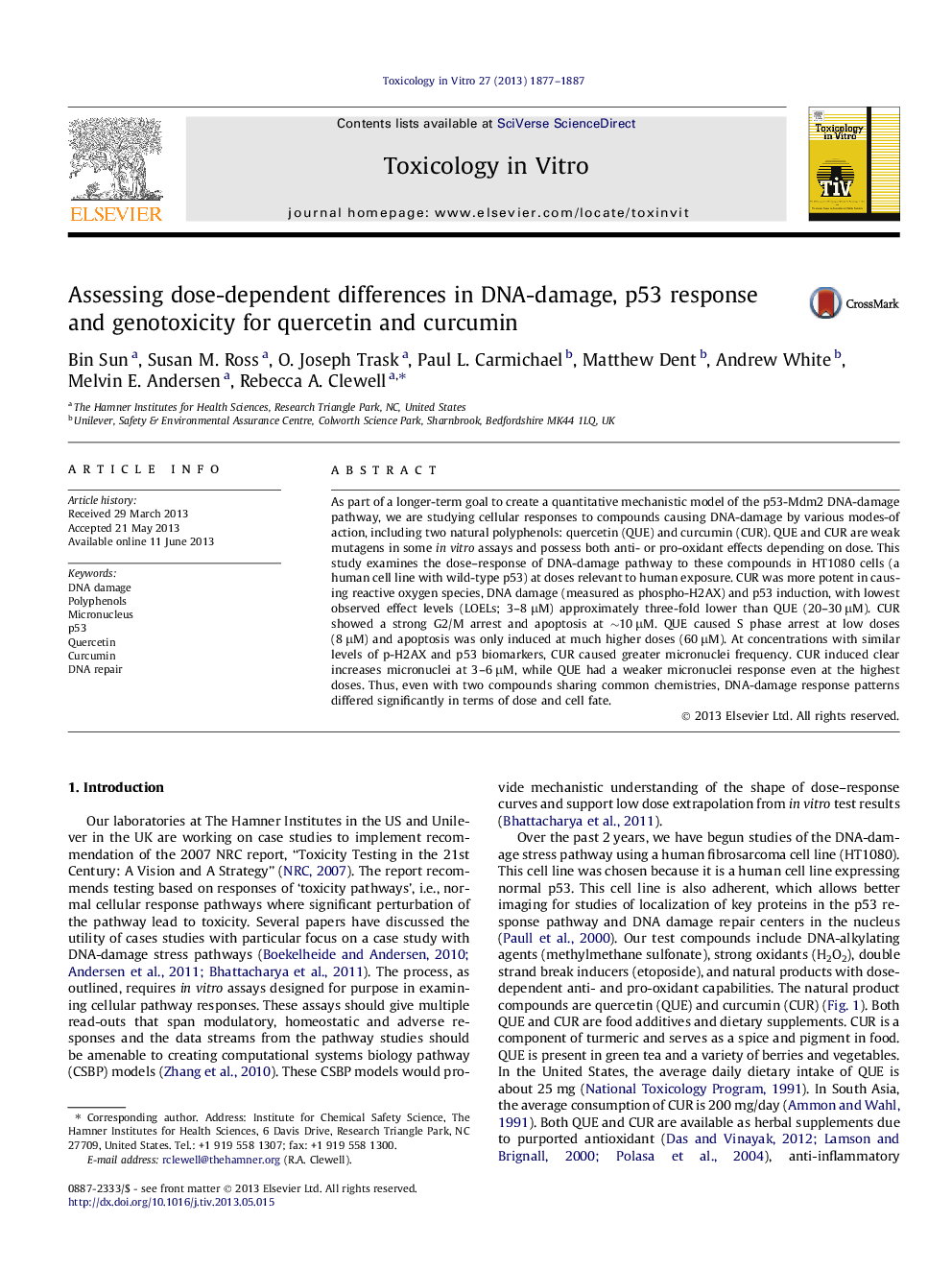| Article ID | Journal | Published Year | Pages | File Type |
|---|---|---|---|---|
| 5861751 | Toxicology in Vitro | 2013 | 11 Pages |
â¢Curcumin was a more potent inducer of ROS and DNA damage than quercetin.â¢Both polyphenols activated p53 at concentrations where ROS was induced.â¢Cellular response favors cell survival with quercetin and apoptosis with curcumin.â¢Curcumin induced more micronuclei than quercetin at similar levels of DNA damage.
As part of a longer-term goal to create a quantitative mechanistic model of the p53-Mdm2 DNA-damage pathway, we are studying cellular responses to compounds causing DNA-damage by various modes-of action, including two natural polyphenols: quercetin (QUE) and curcumin (CUR). QUE and CUR are weak mutagens in some in vitro assays and possess both anti- or pro-oxidant effects depending on dose. This study examines the dose-response of DNA-damage pathway to these compounds in HT1080 cells (a human cell line with wild-type p53) at doses relevant to human exposure. CUR was more potent in causing reactive oxygen species, DNA damage (measured as phospho-H2AX) and p53 induction, with lowest observed effect levels (LOELs; 3-8 μM) approximately three-fold lower than QUE (20-30 μM). CUR showed a strong G2/M arrest and apoptosis at â¼10 μM. QUE caused S phase arrest at low doses (8 μM) and apoptosis was only induced at much higher doses (60 μM). At concentrations with similar levels of p-H2AX and p53 biomarkers, CUR caused greater micronuclei frequency. CUR induced clear increases micronuclei at 3-6 μM, while QUE had a weaker micronuclei response even at the highest doses. Thus, even with two compounds sharing common chemistries, DNA-damage response patterns differed significantly in terms of dose and cell fate.
